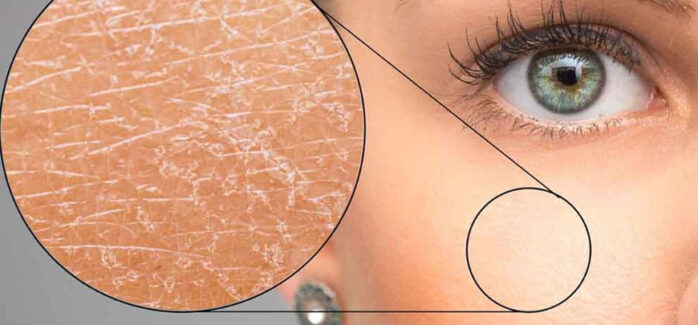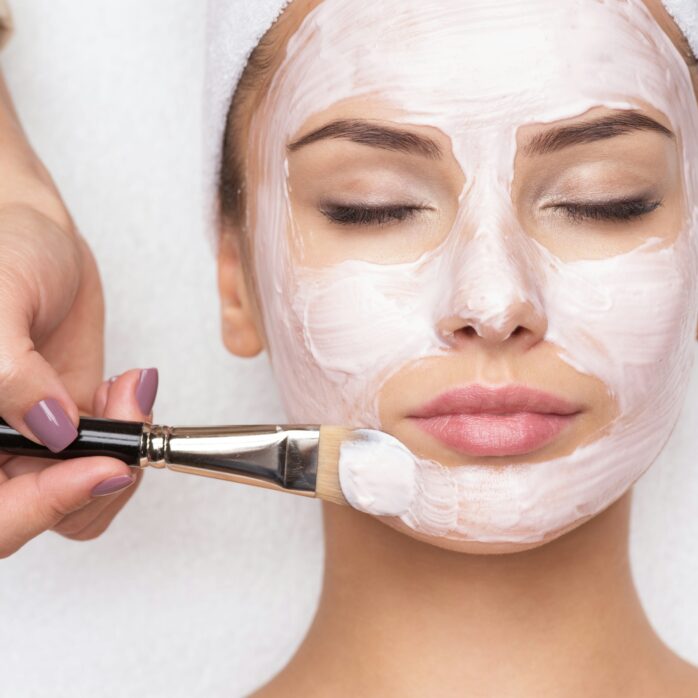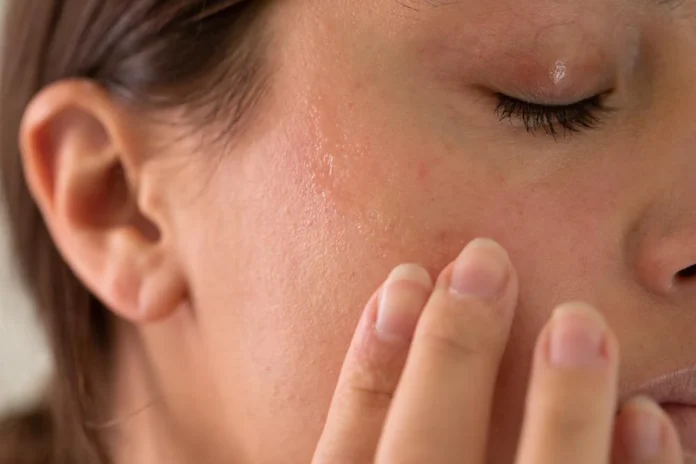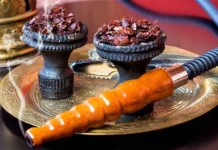Dry skin on the face can creep up fast. One day, your complexion feels fine. The next, your cheeks feel tight, dull, maybe even flaky. Most people blame the weather or just slap on more moisturizer. That’s not enough. Dry skin is a sign that your skin barrier isn’t happy—and unless you get to the real cause, your skin won’t bounce back.
Let’s break down what’s actually making your skin dry, what damage it’s doing under the surface, and how to naturally rehydrate it without relying on harsh or synthetic treatments.
Key Highlights
- Skin can feel dry even if it’s producing oil—hydration and oiliness are not the same.
- Harsh cleansers, hot water, and over-exfoliating are major triggers for dry facial skin.
- Natural oils like jojoba and squalane support the skin barrier without clogging pores.
- External factors like climate and internal issues like dehydration both contribute.
- Professional treatments like a diamond glow facial can restore skin vitality fast.
- Staying consistent with hydration habits is the only real long-term solution.
The Root Causes of Dry Facial Skin

Dry facial skin is not just about moisture loss. It’s usually a combination of multiple triggers happening all at once. Most people focus only on the symptoms—tightness, flakiness, dull texture—but fail to check what’s causing the issue in the first place.
1. Overcleansing and Harsh Products
If your cleanser leaves your skin squeaky clean, that’s not a good thing. Foaming cleansers, alcohol-based toners, and anything with sulfates or strong fragrances can strip away your natural lipids. Those lipids are what keep your moisture barrier intact.
It only takes a few days of using the wrong product for your skin to start showing signs of dryness. This isn’t about visible flakes—it’s about transepidermal water loss, where your skin literally can’t hold onto moisture anymore.
2. Environmental Factors
Cold air, indoor heating, dry climates, or constant sun exposure—all pull water out of your skin. But it’s not just outdoor conditions. If your home or office uses forced air systems or you spend hours in front of a screen, that constant exposure can dry out your face without you even noticing.
3. Skincare Routine Mistakes
Using too many active ingredients at once—like retinol, salicylic acid, or exfoliants—can damage your skin barrier. Even layering serums without sealing them in with the right moisturizer can backfire. Your skin might feel hydrated right after, but that water escapes fast if you don’t lock it in.
Why Natural Hydration Beats Quick Fixes

There’s a difference between temporary surface moisture and real, lasting hydration. Applying a thick cream might soften dry patches for a few hours. But natural hydration works deeper and helps your skin restore its own function.
Treat Skin Like a Barrier, Not a Surface
Think of your skin as a wall. The outer layer—the stratum corneum—has cells (bricks) and lipids (mortar). When your skin lacks moisture, those lipids break down. Natural hydrators rebuild the mortar, so your skin keeps water in longer.
Facials and Skin Recovery

One treatment worth considering for deep, natural hydration is a diamond glow facial. It’s more than just exfoliation—it includes extraction and infusion of customized serums based on what your skin actually needs. Done professionally at places like Moon Valley Med Spa in Phoenix, this treatment helps restore glow and moisture without irritating sensitive skin.
It’s ideal for people who feel like nothing at home is working. Especially if your skin is flaky, rough, or just looks tired no matter how much moisturizer you apply.
Hydrating Your Skin Naturally — Daily Habits That Work
Let’s go beyond topical creams. Your skin gets its hydration from both inside and out. To truly support it, you need to tweak your habits, your products, and sometimes even your environment.
Rebuild Moisture From Within
Drink enough water, yes. But it’s more than that. Add foods rich in essential fatty acids—like avocado, salmon, or flaxseed. Omega-3s help repair skin cells and improve elasticity, so your skin doesn’t just look better but functions better.
Also, watch your caffeine and alcohol intake. Both pull water out of your system faster than your body can replace it.
Choose Oils That Mimic Skin’s Natural Lipids
Natural oils work better than synthetic moisturizers for one reason—they trick your skin into thinking it has enough protection.
Some top choices:
- Squalane: Lightweight and stable. Works on all skin types.
- Jojoba oil: Closest to your skin’s sebum. Absorbs fast and won’t clog pores.
- Rosehip oil: Rich in vitamins A and C. Helps with both hydration and glow.
Apply oils last in your routine. If you use toner or serum, seal it in with oil instead of cream to trap moisture.
The Role of Sleep and Stress in Skin Hydration

Your skin repairs itself at night. If you’re not sleeping well or running on high cortisol levels all day, your skin won’t regenerate effectively. Hydration is more than what you apply—it’s what your body does when you’re not thinking about it.
Stress also messes with your hormones. When cortisol goes up, oil production drops. Blood flow to your skin slows. That’s why stressed skin looks pale and dehydrated.
Fixing this requires:
- A consistent bedtime (ideally before midnight).
- Screen-free time before sleep.
- Short daily breaks to reset your nervous system.
Quick Fixes That Make Dry Skin Worse
Some habits feel good in the moment but silently damage your skin barrier over time.
Avoid the following:
- Hot showers or face washing with hot water. It opens pores but strips natural oils.
- Using too many exfoliants. Even natural scrubs can create micro-tears.
- Skipping SPF. Dry skin is already vulnerable—UV exposure breaks it down further.
- Wiping face with towels aggressively. Pat gently instead.
Shortcuts don’t help skin long-term. You can’t “scrub away” dryness.
When to Consider Professional Treatments
If you’ve tried clean diets, hydration, good skincare, and nothing improves, it’s time to consult a professional.
Treatments that help:
- HydraFacial or Diamond Glow: Cleanse, exfoliate, hydrate in one session.
- Microneedling with hyaluronic acid: Boosts moisture retention.
- V. Hydration Therapy: Fast-track for internal hydration, especially if dehydrated often.
Final Thoughts
Dry facial skin doesn’t mean you need more product. It means your skin’s ecosystem is out of balance. Fix the barrier. Nourish it naturally. Stay consistent. Hydration takes time, but when it works, your skin doesn’t just look healthy—it feels alive.
The smartest move is to treat your skin like a living, responsive organ—not just a surface to cover. Learn how to support it instead of forcing it to behave.




